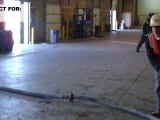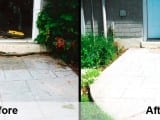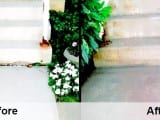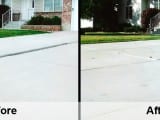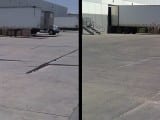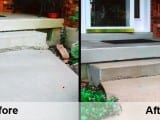
Property owners and city officials alike must repair sidewalks regularly in order to comply with municipal code regulations and prevent injuries. Through concrete lifting, city and individual-owned sidewalks can be repaired with minimal cost and within a reasonable time frame. Read on to learn more about how the process works.
Signs of a High-Risk Sidewalk
While municipalities normally have strict limitations surrounding trip-and-fall lawsuit claims, it is in all parties’ best interests to avoid injuries, especially if an individual homeowner could be held at fault in a personal injury lawsuit. Sidewalks that require repair will exhibit one or more of the following characteristics:
- Cracks
- Shifting under pressure
- Crumbling edges
- Raised or lowered edges greater than one half of an inch
- Improper grading
Before beginning work, certain towns may require a completed sidewalk repair permit application. Consult with the local office that governs sidewalk repair in your area – most commonly the building or transportation department.
What Is Concrete Lifting?
Concrete lifting, sometimes called mud jacking, is a building tactic that raises sunken or uneven concrete sections using grout. First, the concrete specialists drill a hole into the target area. Next, the grout is injected beneath the sunken sections. The grout is normally made of lime or sand, with minimal concrete added for support, only when necessary.
Concrete lifting is a sensible repair option, especially when the majority of the concrete slab is still in good condition. Because concrete lifting is a method used to even out the surface rather than support the entire concrete section, grout is the desired material of choice. The grout enters the drilled hole smoothly, easily filling the space underneath the concrete slab. It would be much more difficult to achieve the same level results if wet concrete were used instead. After the concrete slab is adequately raised to its previous level, the hole is patched and the top surface is evened out using the grout mixture.
Who Is Responsible for Sidewalk Repair?
Many cities or towns have unique bylaws surrounding sidewalk repair. For example, Seattle residents are fully responsible for sidewalk upkeep on their property’s street front. The Seattle Department of Transportation provides extensive diagrams and pictures in an online guide so property owners can diagnose and promptly repair sidewalk issues. In San Diego, the city is responsible for damage to sidewalks caused by vehicle accidents and utility work. Normal degradation is the responsibility of the property owner, although the city may reimburse for 75 percent of the cost of repair. Salt Lake City residents are responsible for sidewalk repairs on their property, but the city may subsidize a portion of the project. Work permits must be submitted through the city’s engineering division and costs paid prior to construction.
For more information on how to repair sidewalks with professional concrete lifting, contact Lift-Up Concrete today.

